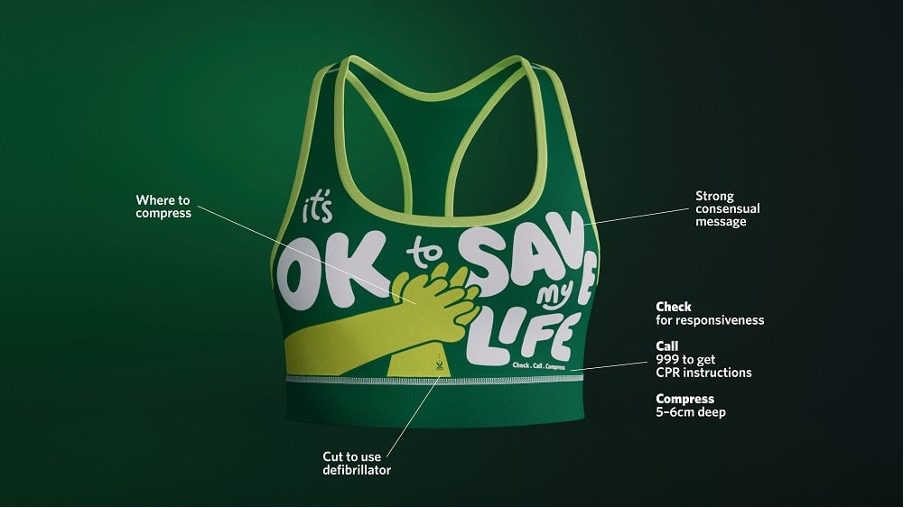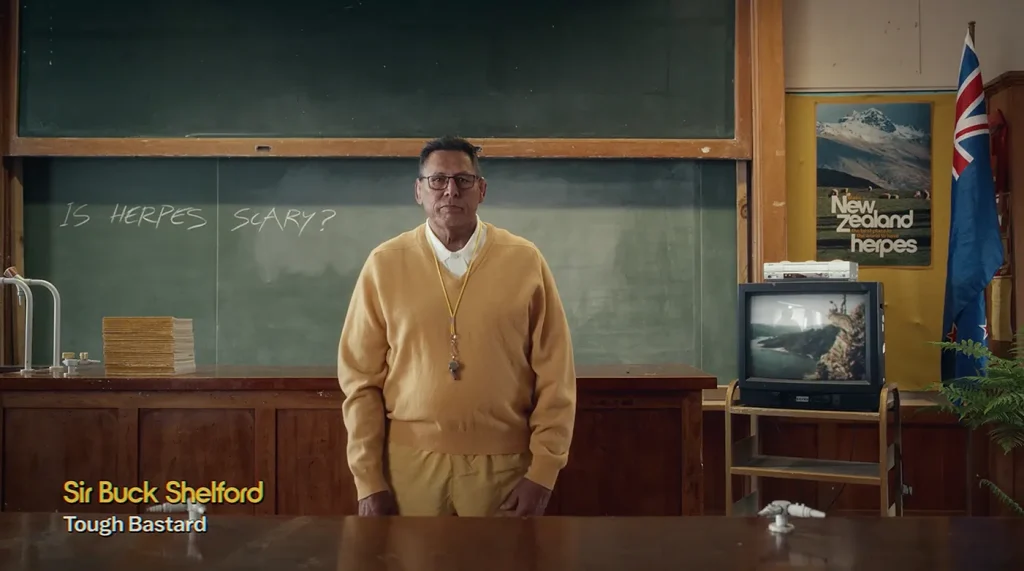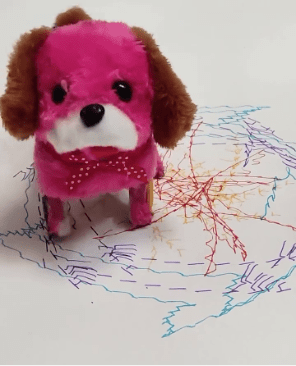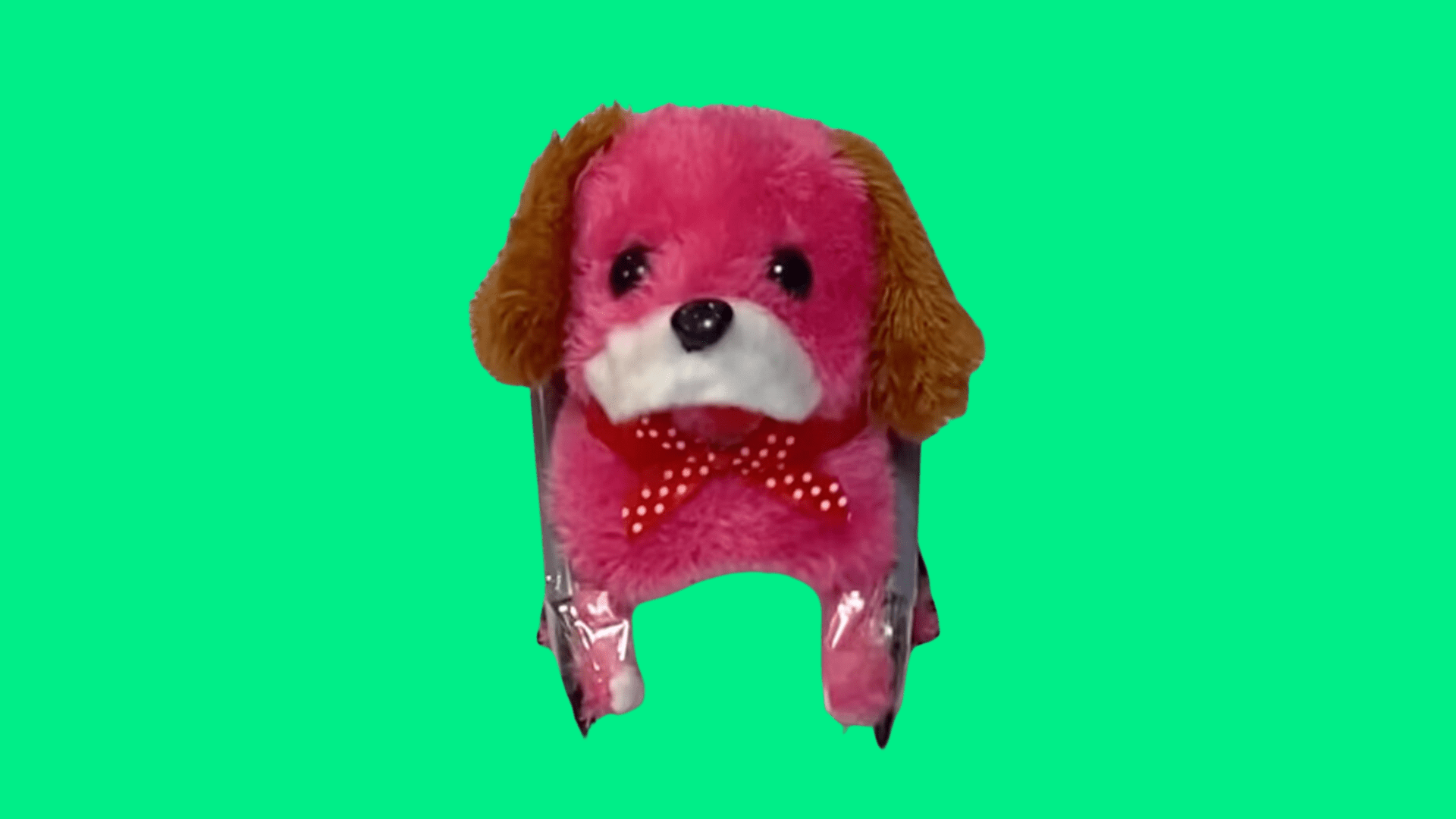In this weeks OUR TAKE, New Zealand is combating herpes shame and an educational bra hopes to save some lives. A plush puppy with mechanical legs is making art and girl guides are taking on AI.
Get Over CPR-Phobia

St. John Ambulance just dropped some pretty eye-opening (and awkward) research to uh ‘clear the air’: a third of Brits are freaked out about giving CPR to a woman because (gasp) they might touch her breasts. That’s right, 33% of men fear they’ll be accused of “inappropriate” touching during life-saving chest compressions, versus 13% of women. So, what’s the solution? Enter the world’s first CPR Bra—yes, you read that right!
This educational bra, backed by the likes of Chelsea FC Women’s Captain, Millie Bright, broadcaster and DJ, Ashley James, social content creator and disability campaigner, Lucy Edwards, and activist, Sharon Gaffka, has a bold message on the front: “It’s OK to Save My Life.” The point? To reassure folks that saving a life is the priority, not worrying about body parts.
Here’s a stat for your next pub quiz: a defibrillator can up the survival chances of someone in cardiac arrest by a whopping 70% if used within three minutes. But nearly half of the male population admit they feel uncomfortable having to, uh, remove clothing. Training, though, can make all the difference.
So, next time you’re faced with an emergency, remember—it’s better to break the ice than lose a life. CPR is for everyone, no ifs, ands, or busts!
Girls Break Bias – And AI Won’t Stop Them

UK-based charity Girlguiding is taking on stereotypes and showing AI how it’s done. Their latest campaign, ‘Girls Break the Bias’, flips the script on gender norms and challenges the biases that even artificial intelligence can’t seem to shake. Launched on International Day of the Girl (October 11), the campaign uses two 15-second films to make its point.
In the first spot, ‘Campfire’, a search for ‘someone building a fire using an AI image generator returns an image of a man in the woods, but Girlguiding’s version? Three girls working together to build one. The second film, ‘Leadership’, shows a search for ‘someone being a leader’ that delivers the image of a man in a suit presenting to a boardroom. The Girlguiding take? A Girlguide helping two younger Brownies read a map.
The campaign follows research showing that 93% of girls aged 11-18 notice gender stereotypes in everyday life, and over half have been told they can’t do something because of their gender. The all-female creative team behind the campaign drives home the point: ‘AI doesn’t always show what girls can do. But we do.’
Herpes Shame? Turns out you can get rid of that (sort of)

Launching on Global Herpes Awareness Day, New Zealand has introduced a new campaign to tackle the virus’ most stubborn symptom – social stigma. As many as 80% of Kiwis have had either oral or genital herpes at some point in their lives, but despite its common place, 30% of those diagnosed still experience depressive or even suicidal thoughts.
A founding trustee of the New Zealand Herpes Foundation has said that they ‘have fielded thousands of calls to [their] support helpline, with many people having received a diagnosis of deep distress, [and that] in many cases the social stigma is much more damaging than the virus.’ Translation: the worst part about herpes isn’t the virus – it’s dealing with the gossip.
In an effort to educate the nation and take the itch out of the issue, the campaign features a bunch of famous New Zealanders stepping up as presenters in the ‘Herpes Destigmatisation Course’. Their mission is to become the most accepting place in the world for people living with herpes. A goal we didn’t know we needed, but now can’t stop cheering for. The videos carefully balance education and humour to turn the perception of the stigma into national pride.
We are big fans of this campaign and of the usage of Kiwi’s special brand of comedic style to break down the barriers of a topic that most people avoid like a bad rash. It sets a new bar for public health campaigns and proves that on open dialogue + humour can work wonders on sensitive issues. Plus the videography and motion graphics are top class. Looks like New Zealand is about to make talking about herpes cool which is quite the viral achievement.
PAWSITIVELY Abstract

“I’m not an artist, and even I could’ve done that.” We’ve all heard someone say this while squinting at an abstract painting. But what happens when even a squeaky toy gets in on the action?
Artist Gergei Eörtzen playfully brings up the old debate about what consists as “art” and who gets to be called an “artist” with his piece titled: “DeGenerative Art – powered by natural stupidity”. The piece is a pink squeaky toy with markers attached to its paws. The puppy moves and wobbles randomly, leaving colourful doodles behind its chaotic path.
Basically it’s a ridiculous and rudimentary pen plotter. However, unlike high-tech pen plotters that use sophisticated algorithms to create autonomous, intricate, flawless designs, this little guy is more of a haywire, messy artist driven by the laws of physics and luck.
Sure, it’s ridiculous. But isn’t that kind of the point? Eörtzen’s work cleverly challenges the idea that art needs to be precise, intentional, or… ironically that art is only made by humans. Especially now, when machines can generate stunningly complex works with one click —maybe it’s good to see a little degenerative art at play. And maybe this answers that old question of what is art and who can be considered an artist…
Well folks, anyone can be an artist, even a squeaky toy!
